19° Old Ice Skate Manufacturer To Identify Old Ice Skate
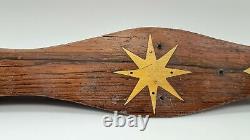



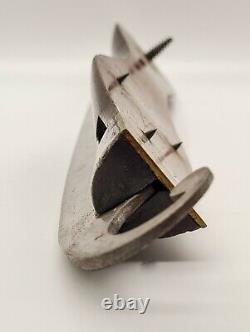
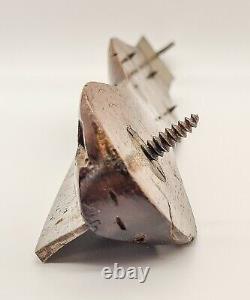
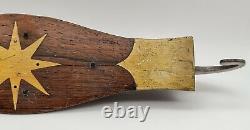
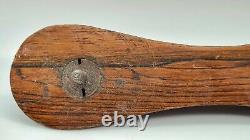
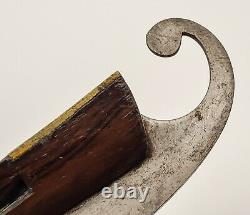
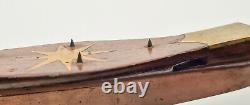
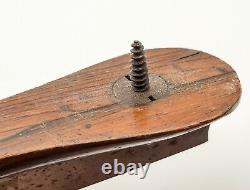
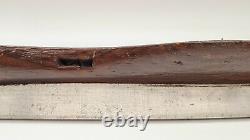


Don't hesitate to visit my shop. Which contains more than 600 objects, link. Length 31 cm - width 5.7 cm - height 3.5 cm - weight 288 grams. The little story of ice skating.
Initially, ice skates were a means of locomotion and hunting. The first rudimentary skates would have appeared in the peoples of northern Europe in the present Finland. The oldest pair of skates known to man is about 3000 years before Jesus Christ. It was said to have been found at the bottom of a lake in Swiss.
These skates had been made with leg bones of large animals, mainly reindeer, moose and snuff. Holes were drilled at each end and skin straps were used to attach them under the boots. The names used by the Dutch of time were "schenkel", which means leg and also "shaats", which means "bone of the leg". In fact, the English word "skating" would come from the Dutch word "schaats". Very rudimentary and of precarious stability, they required the use of a stick in order to maintain its balance.
Around the 14th century, the Dutch began to use wooden platform skates with a flat iron bottom, which they attached to their feet with leather straps. Around 1500, the Dutch added a narrow double-edged metal blade, which could be sharpened, faster and fastened by leather laces. The stick became a thing of the past. The skaters could now move with a single stroke of skate, using the dutch roll or "Dutch swing", a precursor of the push and slide technique, or "pulls and slides", or to slide without a push of sticks.
Bushnell of philadelphie, pensylvania invented the first pliers entirely made of steel for skates. This revolutionized ice skating because, for the first time, skaters can twist, turn, skate and jump without losing their skates! In 1865, a hate jackson, a ballet dancer and a renowned American skater, considered the father of modern figure skating, developed the two-plate all-metal blade. The blade was screwed directly to hate boots. The skater has become famous for his new dance movements, jumps and pirouettes.Haines added the first of the claws to the skate blades in the 1870s, making it possible to pique the jump movements. Strauss, a manufacturer of St. Paul's blades at Minnesota, invented the first closed-end blade made of a single piece of steel.
The skates were now lighter and more resistant. In January 1876 the first artificial (mechanically refrigerated) ice rink was inaugurated in Chelsea, London, in an angleterre: the "glaciarium" of Chelsea, located in the kings road district. Built by john gamgee, it will close by the end of 1876. Shipments are protected and sometimes insurance is linked to the shipment. It is imperative that when receiving the object, you pay attention to the condition of the envelope or cardboard. If you notice any damage, crushing, destruction or other, before any reception, make sure that the item is in good condition before taking possession of the mail or parcel and validating its receipt. If you do not do this, it will be impossible to operate the insurance in the event of damage or damage caused by the transport and in this case no refund will be made. At my level, I do everything I can to protect your purchases. By thanking you in advance for your.Other costs or charges such as customs or import duties, customs clearance and handling may also be claimed during the shipment of your lot. In this case, they will be charged to you later by the service concerned. Do not hesitate to visit my shop which contains more than 600 objects, links. Length 31 cm - width at the width 5.7 cm - height 3.5 cm - weight 288 grams.
The little history of ice skating. Originally, ice skates were a means of locomotion and haunting. It would be in the people of northern Europe, in present-day Finland, that the first basic skates would have appeared.
The oldest pair of skates known to man date from around 3000 bc. She was found at the bottom of a lake in Switzerland.These skates had been made from the leg bones of large animals, manually reindeer, elk and oxen. Holes were drilled at each end and skin straps were used to tie them under the boots. The names used by the dutch at the time were "schenkel", which means leg and also "schaats", which means "bone of the leg". Moreover, the english word "skate" come from the dutch word "schaats". Very basic and precariously stable, they required the use of a stick to maintain balance.
Around the 14th century, the dutch began to use wooden platform skates with a flat iron bottom, which they attached to their feet with leather straps. Around 1500, the dutch added a narrow, double-edged metal blade, which could be sharpened, made fater, and tied with leather laces. The stick became a thing of the past. Skaters could now move with a single stroke, using the "Dutch roll" or "Dutch swing", precursor of the "push and glide" technique, or "push and glide", i. Slided without pushing of sticks. Bushnell of philadelphia, pennsylvania invented the first all-steel toe clip for skates. It revolutionized ice skating because, for the first time, skaters could twist, turn, skate and jump without losing their skates! In 1865, jackson hates, a renowned american ballet dancer and skater, considered the father of modern figure skating, developed the all-metal two-plate blade.The blade was created directly to hates' boots. The skater became famous for his new dance moves, jumps and pirouettes. Haines first added claws to skate blanks in the 1870s, making dives possible to initiate jumping motions. Strauss, a blademaker from st.
Paul, minnesota, invented the first closed-toe blade, made from a single piece of steel. The skates were now lighter and stronger.
In January 1876, the first artificial ice rink was inaugurated in Chelsea, London, England: the "glaciarium" of Chelsea, located in the kings road district. Build by john gamee, it will close at the end of 1876. It is imperative that when receiving the object, you pay attention to the condition of the envelope or cardboard. Thanking you in advance for your cooperation and understanding.
In this case, they will be invoiced to you later by the service concerned. This item is in the category "art, antiques\ objects of xixe and before".
The seller is "austrouvails" and is located in this country: fr. This item can be shipped to the following country: whole world.
-
Unit quantity: 1
- subtype: ice skate Style: napoleon iii Material: wood and metal Authenticity: original
- origin: unknown
- mark: to indifify
- type: popular art object


